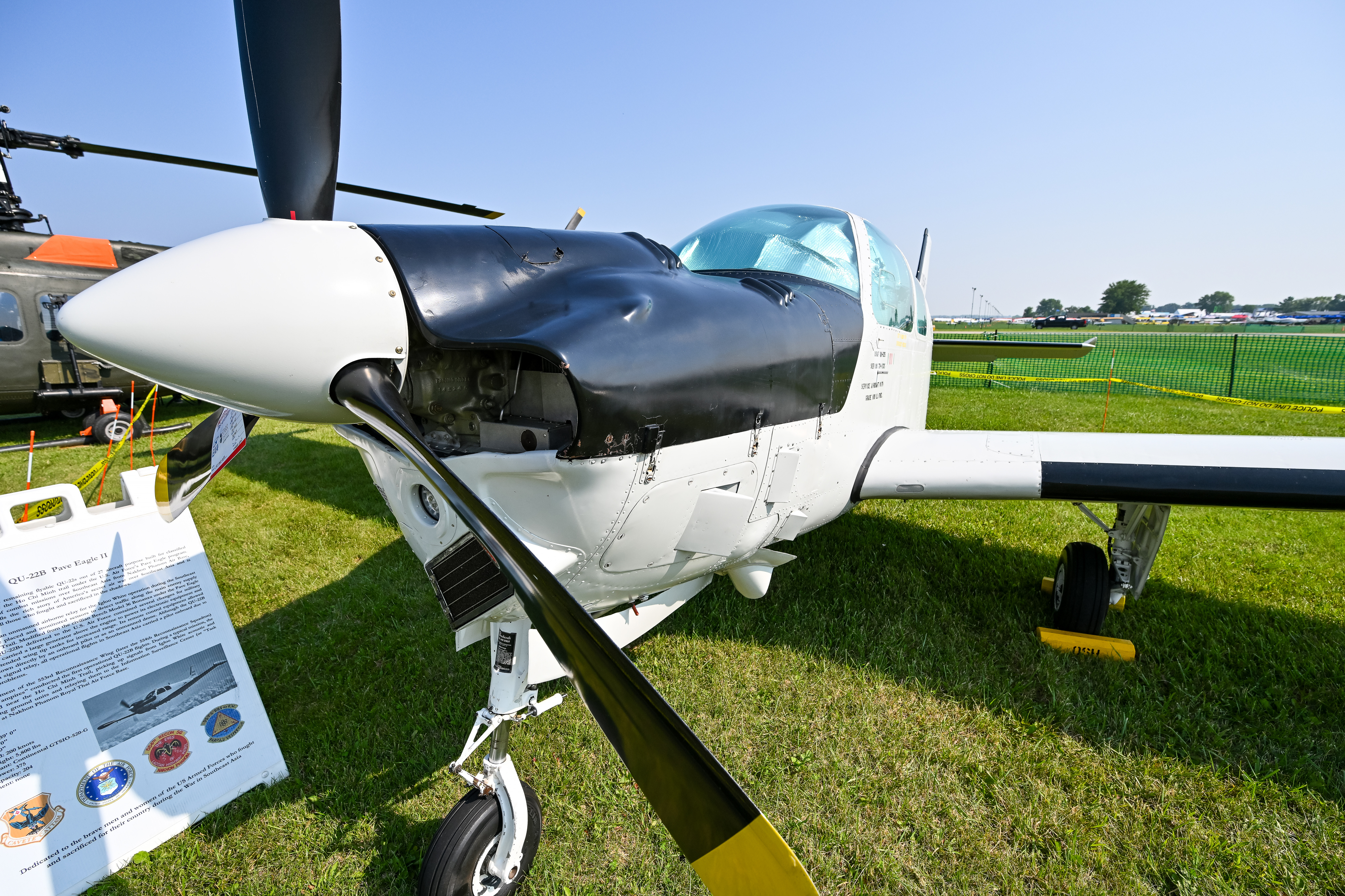The Bonanza that never was
Once-secret Beechcraft now nifty showpiece
Call it Bonanza-ish. The Beechcraft QU–22B Pave Eagle is an amalgam of Beechcraft designs with the fuselage of a Bonanza, and the wings and landing gear of a Baron.
It has a maximum gross weight of more than 5,000 pounds and carries 203 gallons of fuel. It has the 8-inch-wide propeller blades of a Mitsubishi MU–2, and a pronounced hump on the top of the cowling covers a 375-horsepower, geared, turbocharged Continental GTSIO 520-G. It was designed to operate—autonomously—at 30,000 feet, for a covert mission over Vietnam.
“Hartzell said, nope, never built the prop. So the prop’s never been built. The engine has never been built. The airplane has never been built. But here it is today,” said David Valaer, CEO of Green Taxi and owner of one of two remaining flyable QU–22Bs. The unusual aircraft were built in secret for Operation Igloo White, which used sensors to detect traffic along the main enemy supply line during the Vietnam War.
“In Vietnam they had a problem,” Valaer said. “They had sensors on the Ho Chi Minh Trail that picked up signals from the movement of the troops on the ground. But the transmitters couldn’t transmit all the way back to Thailand where the equipment received the signals to then translate it into usable intelligence.”
The United States first employed Lockheed EC-121R “BatCats,” a military variant of the Super Constellation, to relay the signals from the sensors, but operating those aircraft with a 15-person crew proved to be quite expensive, Valaer explained. So the U.S. Air Force tasked Beechcraft with creating an aircraft that could be operated by remote control. The QU–22A, a modified Beechcraft Debonair, wasn’t up to the challenges of the mission, so Beechcraft developed the QU–22B.
In addition to the powerful geared engine and airframe modifications, the QU–22B had a large generator on top of the engine to run deicing boots and electronics for the sensor relay and autonomous operations. The generator and electronics have been removed from N22QU—along with explosive wing bolts designed to self-destruct if the operator lost control of the airplane under remote operation.




Although some Igloo White missions were flown autonomously, most flights were crewed. It handles much differently from a typical Bonanza, Valaer said.
“This has got so much torque that on takeoff, the last inch of the throttle, you’ve got to be ready with the right foot,” he said. The airplane has rudder trim, but “when I get all the way to 36 inches of manifold pressure and 3,400 rpm, my right foot is almost on the floor and I’m tapping the right brake to keep it straight.”
N22QU was built in 1970 and flew more than 1,500 hours in a year and a half in Vietnam, Valaer said. It’s flown only about 200 hours in the more than 50 years since.
Valaer said Mark Clark of Courtesy Aircraft restored this QU–22B in the 1990s using parts from three airframes. The airplane changed hands a couple of times, and Valaer even bid on it around 2010 but lost the bid. Later, when he saw the airplane at Addison Airport in Texas, he connected with owner Brian Studer and even flew with Studer in the airplane a few times. Studer died in 2017, and Valaer kept in touch with the family. Seven years later, they were ready to sell it to Valaer, and he took it to McKinney, Texas, for a nine-month, detailed annual.
Valaer brought the QU–22B to Wisconsin for EAA AirVenture Oshkosh 2025, where he gave a talk about it at the American Bonanza Society tent, and he plans to fly it to the ABS convention in September. He also hopes to attempt high-altitude records with the airplane.
“People say, what are you going to do with it?” he said. “You don’t really do anything with a warbird. You enjoy it. You share it with people.”





